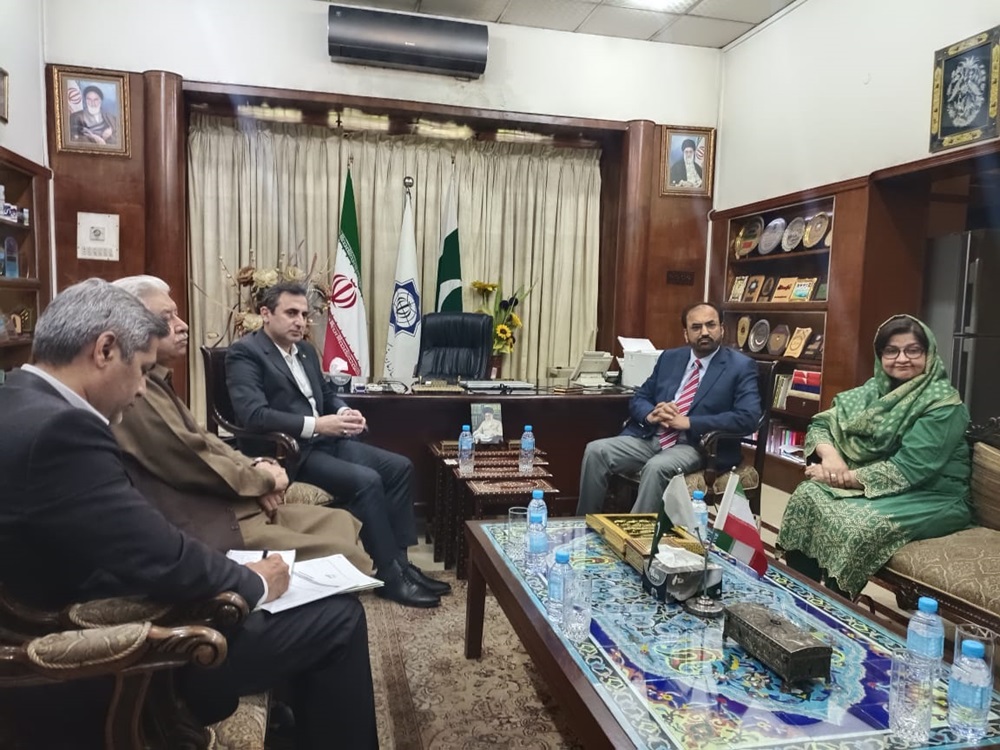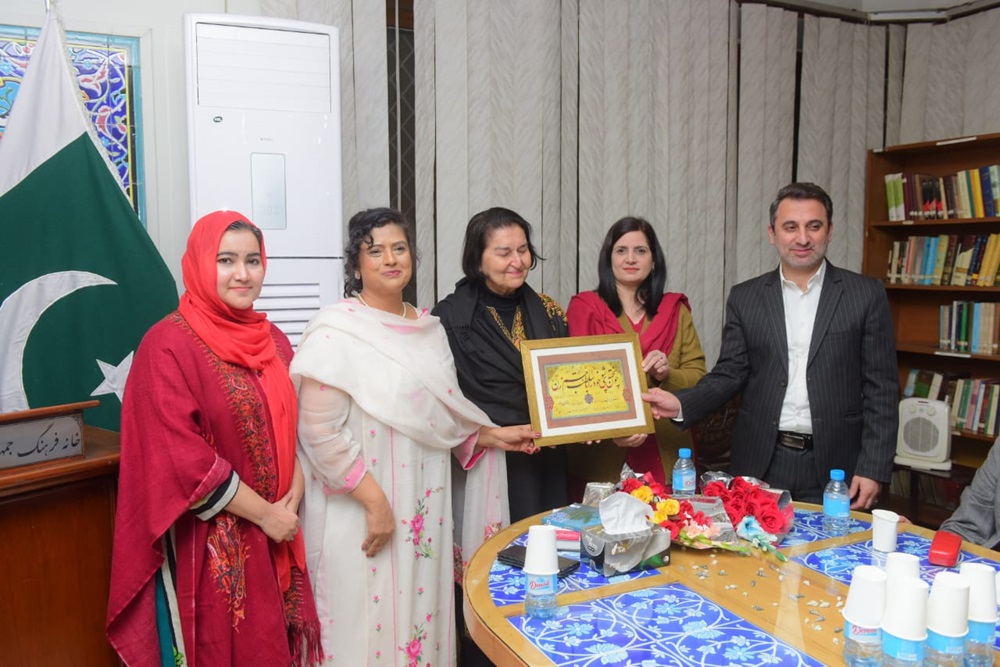Written by: Tanveer Ali
Posted on: January 16, 2025 |  | 中文
| 中文
Khana-e-Farhang Iran, Rawalpindi
Khana-e-Farhang, which translates to “House of Culture,” refers to the cultural centres established by the Iranian government for the purpose of promoting Persian arts, education, culture and history. They began in the mid-20th century, when Iran embarked on cultural diplomacy and started propagating Iranian culture to the world. Over the decades, these centres have expanded to many countries, serving as epicentre to deepen understanding of Persian culture, in order to facilitate cross-cultural exchanges. The establishment of Khana-e-Farhang centres is part of a larger effort to raise awareness of Persian culture, maintain goodwill and introduce the world to the diverse beauty of Iranian art and culture. In addition to being places where culture is showcased, these centres also serve as pathways for improving relations between Iran and the rest of the world.

Prof. Dr. Shahid Munir (T.I), Chairperson Punjab Higher Education Commission (PHEC), visited Khana-e-Farhang Iran, Lahore.
The establishment of Khana-e-Farhang centres worldwide has been strategically planned. These centres exist in countries with Persian-speaking populations or those with historical, cultural or political ties to Iran. The centres organize a variety of programs, such as art exhibitions, poetry readings and artistic workshops, to promote the aesthetic value of Persian civilization. Moreover, many centres offer classes in the Persian language (Farsi) and teach ornamental arts such as drawing, painting and other cultural activities, helping people adapt to the rapidly changing world. Khana-e-Farhang institutions also house libraries, organize conferences, intellectual ceremonies, literary events, lectures, and discussions on various aspects of Persian culture and contemporary issues. They play a dual role: maintaining the identity of Iranian communities in the diaspora, and introducing non-Iranians to Iran’s rich cultural and historical heritage.
In Pakistan, the work of Khana-e-Farhang assumes particular significance due to the historical and cultural ties between the two countries. Persian traditions have long been prevalent in the region now known as Pakistan, as Persian was the official language of the Mughal Empire for centuries. This shared history provides a unique synergy for the activities of Khana-e-Farhang centres in Pakistan. These centres aim to foster the development of cultural and educational relations between the people of Pakistan and Iran. Through certificates and diplomas in Persian language and literature, the centres offer Pakistanis the opportunity to reconnect with this cultural heritage and embrace a tradition that continues to influence Persian art and literature today. The promotion of classical Persian poets like Rumi, Hafez and Saadi is particularly appreciated in Pakistan, where their works are widely read and admired.

Director Khana e Farhang Lahore and Justice (R) Nasira Iqbal giving shield to Ms. Sadaf Mirza, the Danish translator of Javed Nama.
The centres in key Pakistani cities such as Islamabad, Lahore, Karachi, Quetta, Rawalpindi and Peshawar play a significant role in fostering cultural interaction in these diverse societies. In Islamabad, art is a regular feature at the cultural centre, which frequently invites artists to display their works, screen films, or teach foreign languages. Lahore, known as the cultural capital of Pakistan, has a Khana-e-Farhang centre dedicated to art, with a focus on the shared legacy of Persian and South Asian art traditions. In Karachi, a cosmopolitan city, the centre aims to bring together Iranian and Pakistani artists, academics and intellectuals, with the goal of strengthening the region’s cultural potential. In Quetta and Peshawar, the primary goal is to promote cultural exchange and strengthen ties with the Iranian population, whose historical and cultural inclinations align closely with Persian traditions.
These centres also bear the responsibility of propagating Persian culture and language in Pakistan. They act as bridges, fostering diplomatic and people-to-people relations between the two neighbouring countries. The centres promote tolerance and democracy, particularly in the face of political tensions, misinterpretations and cultural gaps. By encouraging cultural diplomacy, these centres help improve relations and create mutual understanding, which can lead to further cooperation in areas such as education, business and beyond. For instance, the exchange of cultural products like art exhibitions, concerts and literary fairs demonstrates how cultural interactions can transcend political and ideological barriers.
Additionally, these centers have social significance in maintaining the Iranian culture of immigrants living in Pakistan today. They provide an opportunity for Iranian expatriates to preserve or regain their cultural identity while introducing Iranian roots and cultural treasures to the people of other countries. This interaction is positive, as it enhances both communities’ appreciation of each other’s cultures and cultural identities. Furthermore, Khana-e-Farhang centres help rejuvenate the intellectual and artistic life of the country, presenting new ways of thinking to the local populace, stimulating critical thinking and inspiring creativity. Their emphasis on education, whether through language lessons or academic discussions on cultural heritage, ensures that youth are equipped with the tools necessary to engage constructively with cultural products.
Therefore, Khana-e-Farhang centres are vital for the dissemination of the Persian culture, education and arts worldwide, while also enhancing interaction and cooperation with other countries. This is especially important in Pakistan, given the historical, linguistic and artistic connections between the two nations. Through their numerous programs and contributions to intellectual and artistic activity, these centres provide a beneficial exchange between Iran and Pakistan, enriching the cultural experiences of both nations. In a world where mistrust often hinders cooperation, the work of Khana-e-Farhang centres is a testament to how culture transcends barriers and builds bridges, uniting people with purpose and direction.
You may also like: